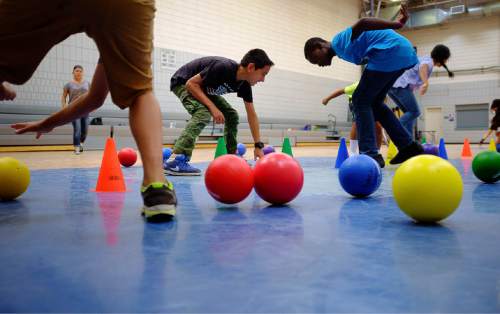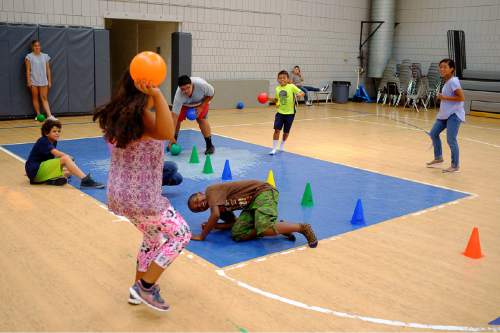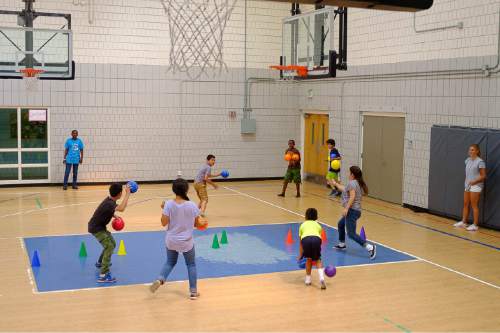This is an archived article that was published on sltrib.com in 2015, and information in the article may be outdated. It is provided only for personal research purposes and may not be reprinted.
Good things are happening on Salt Lake City's west side — traditionally seen as the capital's forgotten stepchild.
There is a new library in Glendale and the expansion of programs such as YouthCity, which provides activities and educational experiences for out-of-school kids. Some areas along the Jordan River have been spruced up, and North Temple has seen renovation and the arrival of a light-rail line to Salt Lake City International Airport.
A proposed recreation bond would bring more parks, preserves and trails.
Despite those things, perceptions remain that the west side is getting the shaft.
A poll commissioned by The Salt Lake Tribune found 52 percent of west-side voters said their neighborhoods did not get services equivalent with the east side. Thirty percent of west-siders said that services were about equal and only 3 percent said services on the west side were better. Another 15 percent weren't sure.
By contrast, 36 percent of east-side respondents answered the west side gets equal services. Another 36 percent of east-siders said the west got worse treatment, while 12 percent said the west fared better than the east.
The Tribune poll found that, citywide, a plurality (41 percent) believes those west of Interstate 15 do not get their fair share of services.
A third of all respondents said that the west side and the east side get equal treatment, while 10 percent said the west side gets better service than east-siders. Another 16 percent said they weren't sure.
The SurveyUSA poll was completed before the state Prison Relocation Commission on Tuesday recommended that a new prison be built on undeveloped property west of the airport. It questioned 662 registered Salt Lake City voters in mid-July and has a margin of error of plus or minus 3.9 percentage points.
West-siders "feel like we've been left out," said City Councilman Kyle LaMalfa, whose District 2 encompasses Glendale and Poplar Grove. "But the city has gone a long way toward equalizing the delivery of services."
LaMalfa has worked to bring more services and programs to the west side, including the expansion of YouthCity.
As far as ongoing services, such as garbage, fire and police, LaMalfa said they are "delivered in a good way equally in all parts of the city."
Evaluating west-side services reveals a mixed bag in the eyes of Amy Barry, chairwoman of the east side's Sugar House Community Council.
"When I think of municipal services, I think of streets, water, snowplows and lights," she said. "Those things are pretty equitable [on both sides of town]."
But, she added, there are other things to be considered, such as transportation, economic development and master plans.
"It's those attributes the west side doesn't get," Barry said, "that create a good quality of life."
White respondents were more likely than Latinos to say the west-side was getting worse services than the east side, 43 percent compared to 31 percent. A plurality of Latinos (47 percent) said the two sides of town were getting equal treatment. Just 31 percent of whites agreed.
Eleven percent of whites and 3 percent of Latinos said the west side gets better services.
Like LaMalfa, Bryce Garner, chairman of the west side's Fairpark Community Council, said the city is trying to make up for historical inequality in services on the west side.
He pointed to a proposed $150 million recreation bond as part of that effort. The bond, among other things, would transform Glendale Golf Course into a regional, multipurpose park and remake the Jordan River Par 3 course into a nature center.
"That would be great, if it passes," Garner said. "But I hear people from the east side say, 'What's in it for us?' "
The west side needs a regional park, Garner said. "Where is the Liberty Park in west Salt Lake City?" he asked. "We'd like to see something like that."
But City Councilman Charlie Luke, who represents the east side's Yalecrest area, calls it a "misconception" that the west side doesn't get its share of municipal services, including parks.
"The city has delivered more parks and recreation opportunities to the west side," he said. "And that is just a reality."
Councilwoman Lisa Adams, who represents Sugar House, said the delivery of services looks equitable. By her count, the west side and east side have a roughly equivalent number of parks. But while the west has more acreage in parks, she said, the east side does have more recreation centers.
Council Districts 1 and 2 are west of I-15 and comprise about 30 percent of the population. Districts 3 through 7, east of I-15, make up about 70 percent of residents.









